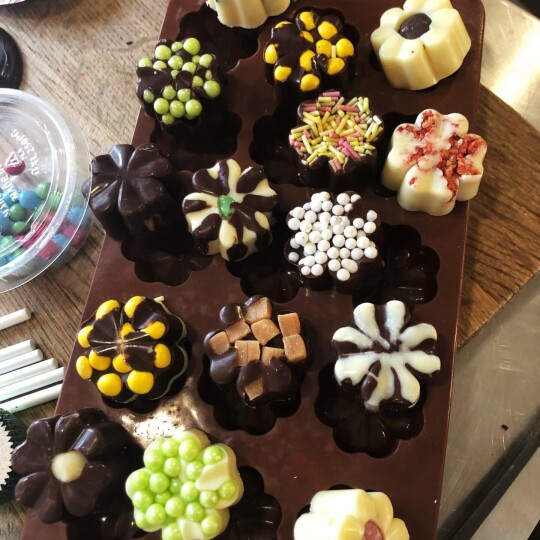With Halloween on the horizon I thought I would dedicate this blog to how important our dead are to food – in fact, I would go so far as to say they are almost as important as the living! The ritual connections between food and the dead span centuries and cultures. Recipes and rituals are interwoven, traditions run deep in local cultures and are often misunderstood or misinterpreted in the modern day.
In Ancient Egypt the dead were buried with honey cakes to eat in the afterlife. The Mexican, Dia de los Muertos (Day of the Dead), is a rich and colourful celebration of death and the continuation of life and is synonymous with a sweet bread called Pan De Muerto.

Bones on Bread Anyone?
The bread becomes the centre piece of the altar during the Day of the Dead ‘holiday season.’ Now this bread does vary from region to region but the shapes on top are apparently suggestive of bones and often sprinkled with sugar or sesame seeds. Now wouldn’t that make a really interesting #GBBO showstopper bake or technical challenge?
A common misconception I hear is that we have taken on the traditions of Halloween (or trick or treating) from the Americans. In fact, it is now believed that Halloween was exported to North America with the Irish and British colonists. Halloween is thought to have derived from a pre-Christian festival known as Samhain, celebrated among the Celtic peoples. And of course they was a feast….Samhain was the principal feast day of a year that began on 1 November. Traditionally, bonfires were lit as part of the celebration.
One of the best-known examples of cakes for the dead are soul cakes, made on 28 October, in connection with All Souls’ Day. For many pagan people, the early Celts, this was the day the dead got up and walked around on earth, and unless they were fed, people believed, the spirits might harm the living. It then became tradition that on the night of October 31st soul cakes were given to visitors to their households (usually children) in return for promises to say prayers on behalf of dead relatives.
There are many variations of soul cake out there and they are more of a spiced biscuit than a cake, why not give them a go? Here’s one easy to follow recipe I found:

One for the Trick or Treaters
INGREDIENTS:
1 cup butter
3 3/4 cups sifted flour
1 cup fine sugar
1/4 teaspoon nutmeg
1 teaspoon cinnamon
1 teaspoon ginger
1 teaspoon allspice
2 eggs
2 teaspoons cider vinegar
4 -6 tablespoons milk
powdered sugar, to sprinkle on top
DIRECTIONS
Preheat oven to 350°F.
Cut the butter into the flour with a pastry blender or a large fork. Blend in the sugar, nutmeg, ginger, cinnamon and allspice; beat eggs, vinegar, and milk together. Mix with the flour mixture until a stiff dough is formed. Knead thoroughly and roll out 1/4-inch thick.
Cut into 3-inch rounds and place on greased baking sheets. Prick several times with a fork and bake for 20-25 minutes.
Sprinkle lightly with powdered sugar while still warm.
With the visitors, came the lanterns – often made from vegetables (turnips and beets were popular choices) and put in the windows – these were to welcome ghosts and wondering souls. Now of course these appear mainly as pumpkins or the jack-o’-lantern – but who is Jack?
“Jack was a perennial trickster of folktales, who offended not only God but also the devil with his many pranks and transgressions. Upon his death, he was denied entrance into both heaven and hell, though the devil grudgingly tossed him a fiery coal, which Jack caught in a hollowed turnip and which would light his night-walk on hearth until Judgement Day…”
Death Makes a Holiday: A Cultural History of Halloween, David J. Skal [Bloomsbury:New York] 2002 (p. 31-2)
These stories, feasts and traditions interlinking with food make for fascinating reading. So this Halloween, why not make a lantern from a turnip, hand out soul cakes to the kids at the door and try baking a Pan De Muerte!
Happy Halloween!
Yvette x

A turnip Lantern!

